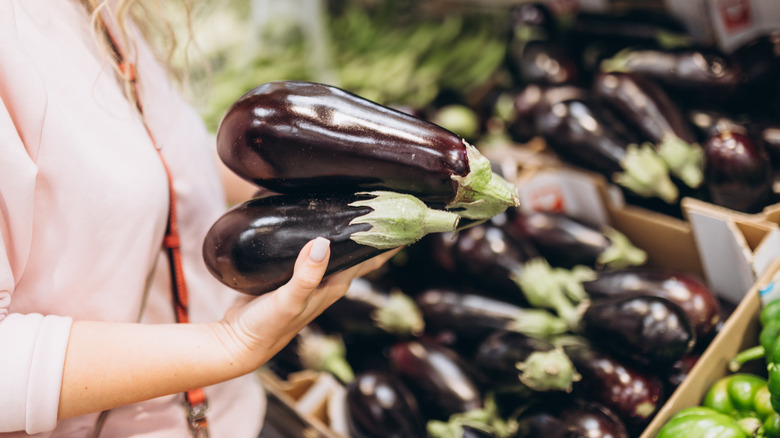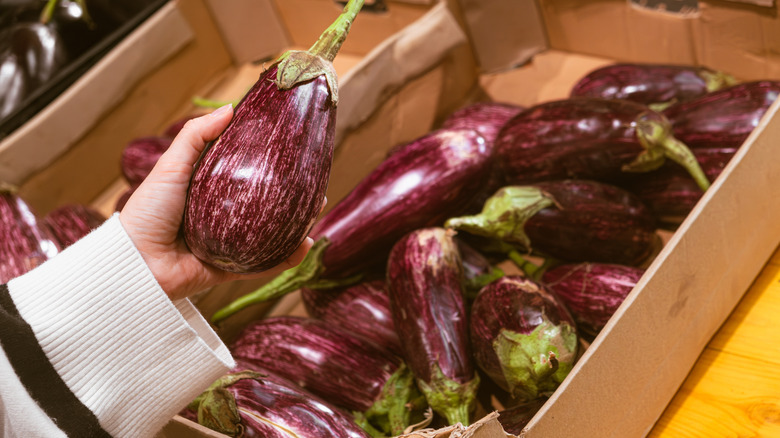Here's How To Choose The Best Eggplants At The Grocery Store
Eggplants are a flavorful, healthy, and hearty addition to any meal, and we have many recipes to prove their versatility. Whether they're a main course or a dip, the key to the best outcome lies first in choosing the freshest eggplants. We interviewed Michael Costa, chef at the DC, NYC, South Beach, and LA locations of Zaytinya by Jose Andres for the best visual and tactile cues to find the best varieties of eggplant at the grocery store.
"Look for varieties like Graffiti, or Italian eggplant which are relatively small and firm," Costa said. "When choosing among them look for uniformly firm texture. Soft spots and brown spots are an indication of advanced age. You can also look at the part of the stem where it was cut from the vine, the drier and browner it is the older the eggplant. If you end up with older eggplants they can always be roasted or grilled whole and used for a puree."
Graffiti eggplants, which are among those variants that can be considered Italian, have a beautiful white and purple striped appearance, but other Italian varieties like the deep purple, rotund Barbarella are equally beautiful and tasty. While each of these varieties has different shapes and sizes, they're all smaller than American globe eggplants and have creamier flesh when cooked.
What's wrong with older eggplants?
Age is an important factor for any type of produce at the grocery store because as veggies sit in grocery crates or even in your fridge at home, they lose texture and flavor quality. The visual and tactile clues chef Michael Costa mentioned along with wrinkled, tough skin and large seeds on the interior, result in an unpleasant texture and a bitter taste. Consequently, not only should the eggplants be uniformly firm, but the skin should also be a uniformly vibrant and glossy color.
There's no way to turn back the clock on an old eggplant, but you can still salvage an older eggplant with a few preparation tips. If the eggplant has soft spots or brown spots, you can cut them out with a small paring knife. If the skin is tough and wrinkled, you can likewise peel it with a potato or carrot peeler. To improve a squishy texture and help draw out bitterness, cut the eggplant into chunks and salt them. Letting the chunks rest in a dry salt brine for 30 minutes is a foolproof way to improve the taste of an old eggplant if you want to eat it as a veggie side dish or mezze salad. That said, chef Costa's recommendation of grilling or baking an eggplant whole saves you prep time, and blending the cooked flesh with robust flavors will help mask any potential bitterness.

